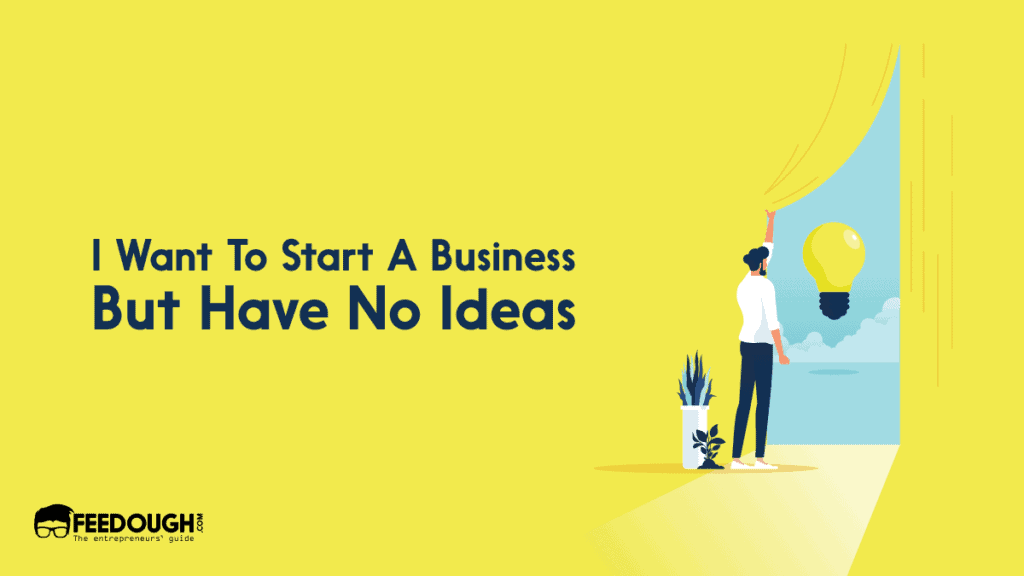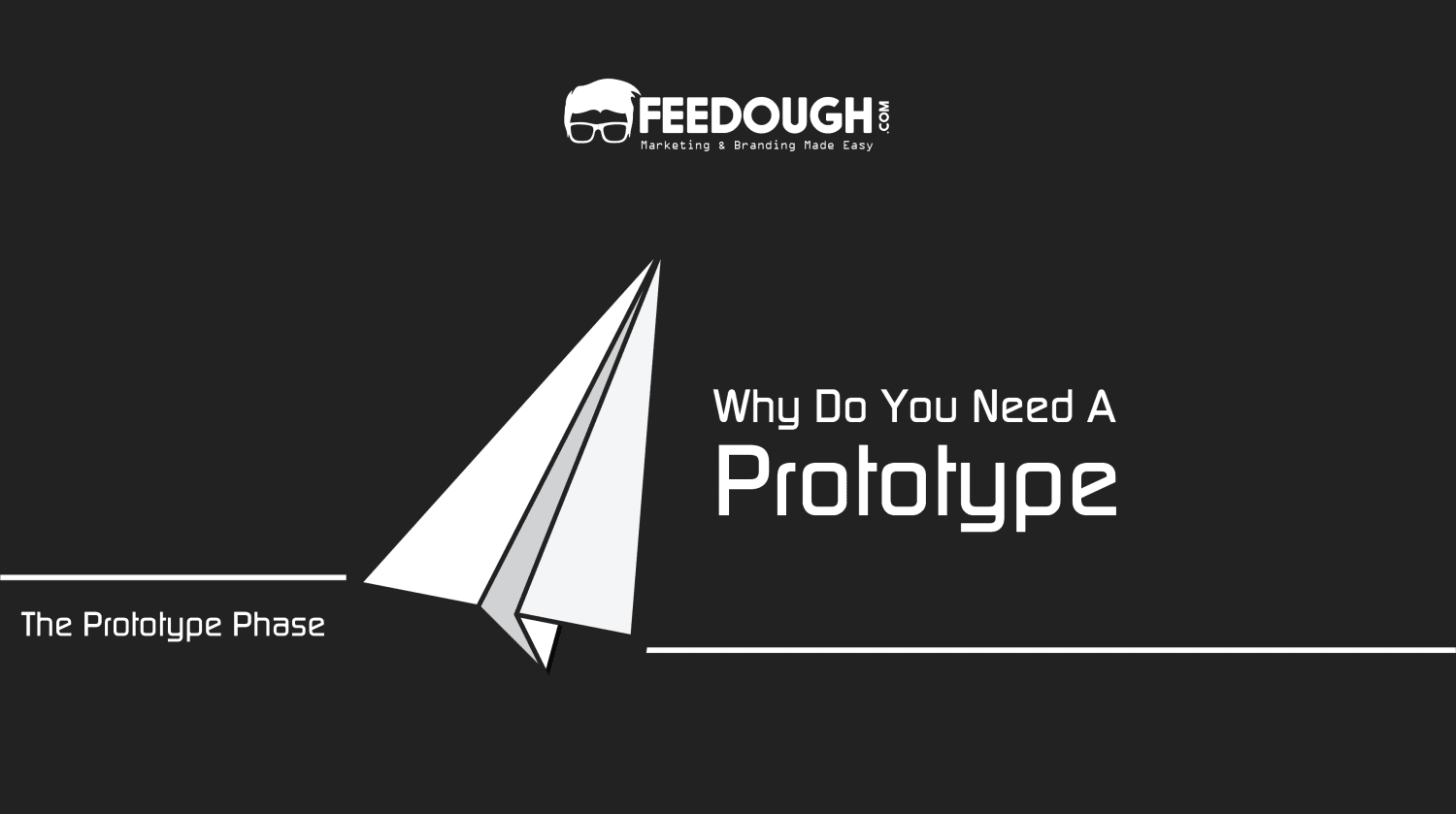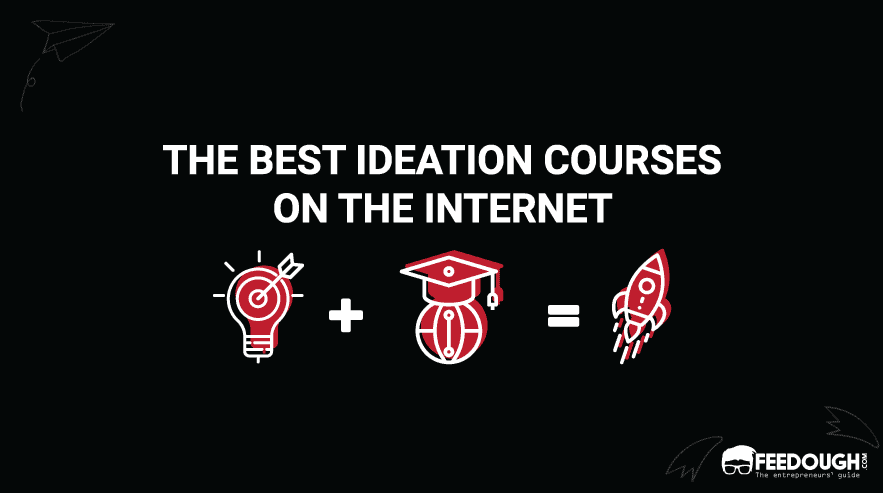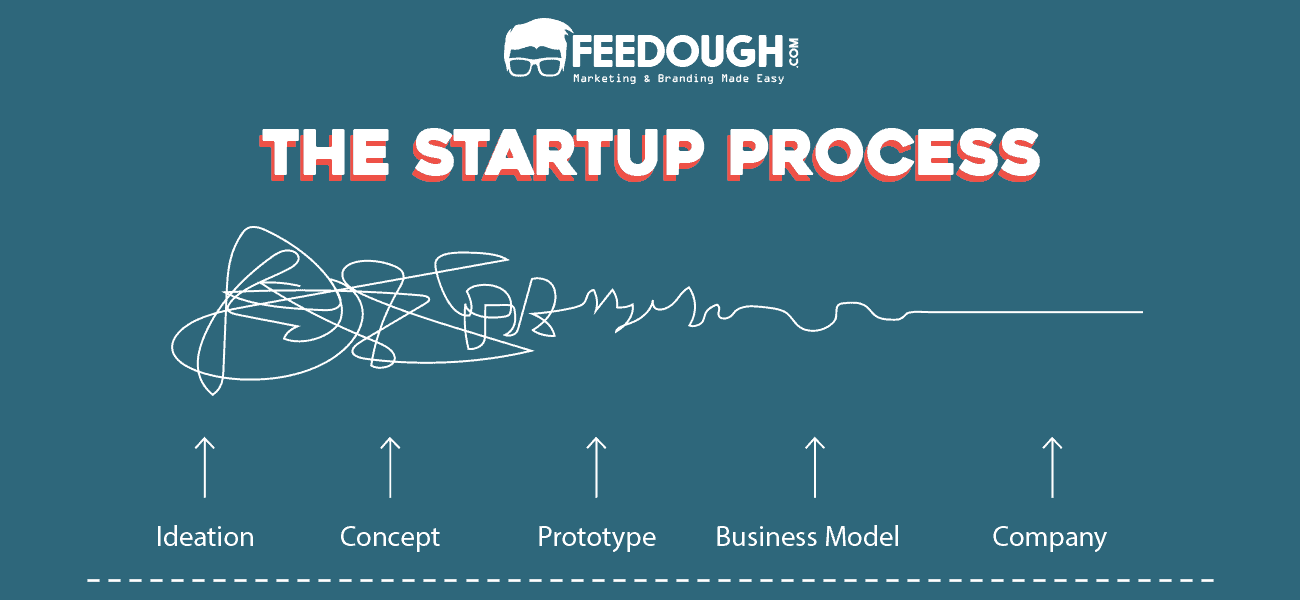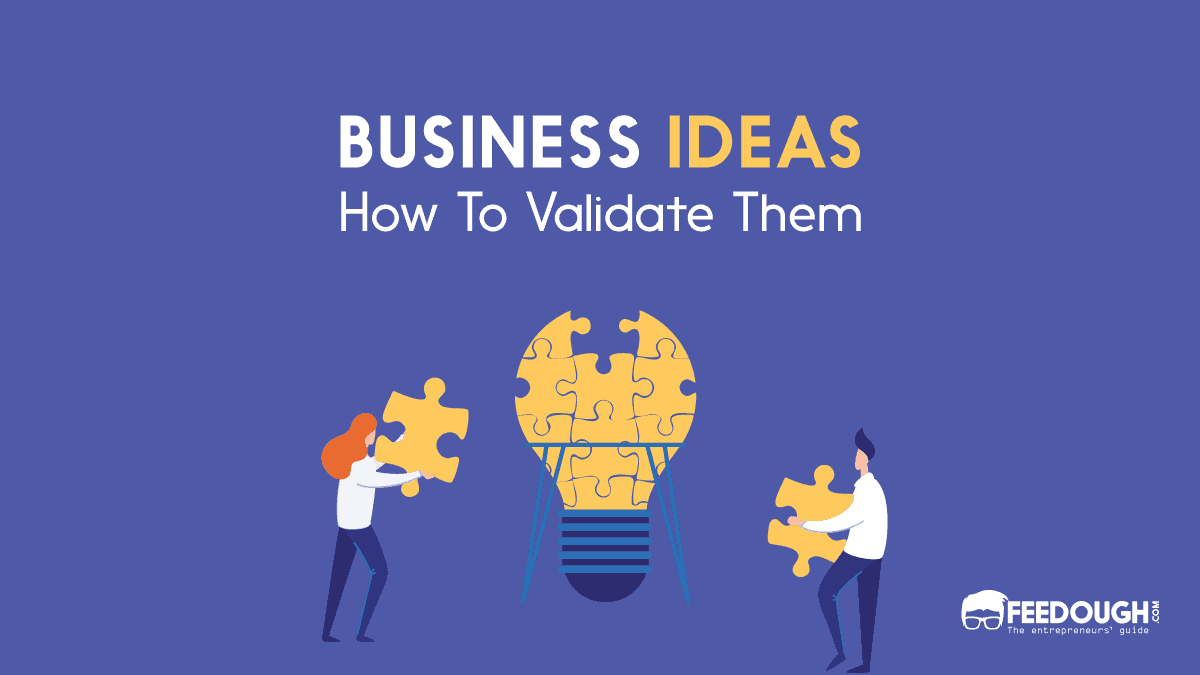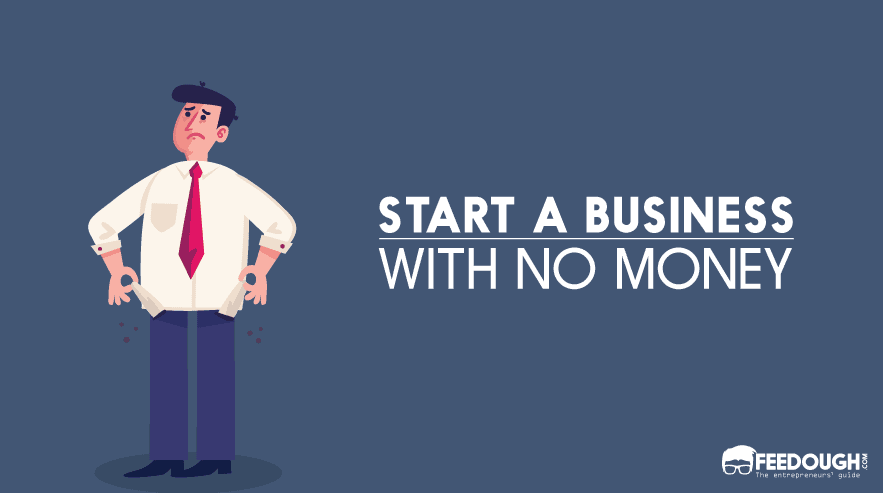So you’ve decided to start a business. Give yourself a pat on the back for taking that first step!
But the problem?
You’re struggling to come up with a business idea.
I know things can get pretty overwhelming, especially when you’re just starting out.
But don’t worry; while I can’t give you a specific business idea, I can share a proven system to get you started and help you find an idea (or ten) that’s right for you.
The Business Ideation Process
Your business idea isn’t everything, but it is the backbone of your success. And this perfect backbone requires a eureka moment.
But this eureka moment isn’t just luck. Well, most of the time, it isn’t. It is something that requires you to put in the conscious effort and be able to draw inspiration from your surroundings.
So, how do you find your business idea?
You use the business ideation process. This process involves four steps:
- Find a trigger: A trigger is what sparks your first idea. It can be a problem or a passion you have, an industry trend, an existing business model, or something unique you noticed in the market.
- Do research: Once you have identified the trigger, it is time to research and study it thoroughly. Researching involves knowing the competition around you, understanding customers’ needs, and getting a better sense of what your business should be like.
- Build a solution to a problem: After researching, you create a solution to the identified problem or need. This is when you convert the idea into a concept and then, in turn, formulate a business model.
- Build the business: This is when you bring your idea to life by doing things such as creating a business plan, setting up the ownership structure and registering the business. People often mistake this individual step for the whole process, but it is only one part of the whole process.
As you see, there’s a lot that you need to do to start a business. It isn’t just the idea at work but a set of steps and procedures you need to take to turn your idea into a real business. But don’t be overwhelmed. Here’s how you can go about with each.
Getting A Business Idea
Business ideas are everywhere. It’s just a matter of looking around and seeing what you can do to improve your life or the people around you. Here are some triggers to get you started:
- Solve a problem: Problems form the basis of businesses, many of which are in our everyday lives. Think about a problem that you have or an issue that people around you face. For example, why is finding a plumber so difficult? Is there a way to make food delivery faster?
- Find an unmet customer need: Is there any market out there that hasn’t been tapped yet or needs more improvement? For example, a business may be ignoring one problem of its target audience. This requires you to be well-versed in the industry and have the market knowledge to identify what people are looking for. Or you can be a customer this industry caters to.
- Follow the rip, pivot, and jam method: Uber for x, Amazon for y, and Airbnb for z. This method involves you copying a successful business model and applying it to a different market or industry. You can also tweak the same model with your improvements. For example, Postmates adopted the Uber model (aggregator business model) and tweaked it to offer on-demand food delivery.
- Adopt the sniper approach: If Amazon is the shotgun targeting several target groups at once, PetSmart is the sniper, targeting one group (pet owners) in the market with a laser-like focus. You can find several such niches, then research their problems and needs and devise a solution.
- Capitalise using shovels in the gold rush method: With the gold rush method, you identify an emerging trend and provide products or services to capitalise on it. For example, when blockchain mining started gaining traction, many entrepreneurs started offering mining rigs, cloud mining services and trading platforms. Even NVIDIA increased their cryptocurrency-focused product line.
- Use the intersection method: Find intersections among your skills, interest, and network. For example, if you’re a software engineer who loves hiking and has friends in outdoor gear businesses, you could create a mobile app that helps hikers find help on trails.
- The drop-offering method: You find a focused niche with a good following, find sellers that develop offerings catering to that niche, and then offer those white-labelled offerings under your name. For example, you find a client looking for website development and hire a reliable freelancer on Fiverr or Upwork for a fraction of the cost. Then you sell the complete package under your brand at a premium. This is drop servicing. Similarly, dropshipping involves selling tangible products without actually owning the inventory.
Researching And Validating The Business Idea
Once you find the business idea that best suits you and your skill set, the next step is to research and validate it. This step is essential to ensure that the market needs your proposed solution as much as you need the business.
You do this by following the validation process:
Test The Market
Start by conducting surveys or interviews with potential customers to understand their problems and validate your problem-solution fit assumption. The problem-solution fit assumption assumes that your target market has the intended problem and is looking for a solution like the one you are proposing.
A problem with most entrepreneurs is that they conduct these surveys with a formal online or offline questionnaire. It may not be the most convenient way to verify your assumptions accurately.
Instead, when you are just starting out, it is best to start with informal “1-on-1” conversations where your target customers can feel comfortable expressing their opinions. This will help you understand the true problems your customers are facing and how they want to solve them.
Validate Your Assumptions
Just knowing the problem your customers are facing isn’t enough. You also need to ensure that the proposed solution will work for them.
For this, validating your problem-solution assumptions with your target customers is important. You do this by asking them what solution they would prefer and pay for. You must validate whether your customers would actually use it and be willing to pay for it.
For example, let’s say your customer hates to live with their family but can’t afford to rent a place of their own. If you’re creating a co-living hostel, you’d need to validate whether your customers would actually use the service and how much they would be willing to pay for it.
Developing The Solution
Your solution is your offering to solve the intended problem. It could be a product, service or combination of both. But you must ensure that your utility correlates to your customers’ expectations.
You do this by building an MVP first.
The MVP, or the minimum viable product, is a product with just the essential features that customers find useful and are willing to pay for.
For example, Oyo rooms – the biggest player in the budget hotel space, started with just one leased hotel floor. The founders tested the waters with this MVP and expanded only after they received good feedback from paying customers.
Forming The Business
Once your MVP is ready, you build an entire business model around it.
You need to plan how you will operate and make money. For this, you need a business model canvas.
A business model canvas is a single-page document that helps you map out all your business components. It includes things like:
- Who is your customer? What problems do they have?
- What’s your value proposition? How it solves the problem?
- What all resources do you need to operate?
- Which channels will you use to reach your customer?
- Who are your key partners?
- How do you make money?
Once you’re done with the business model, only then can you give the next pat on your back and move on to the next important step: setting up your business.
Some Interesting Business Ideas
I know even this guide can sometimes become overwhelming, so here are some ideas to help you get started:
- Uber for X model: An uber for x model or an aggregator business model involves you to be a middleman between the service providers and customers. For example, Uber for Groceries, Uber for Mechanics, and so on.
- Dropshipping: Dropshipping is a type of ecommerce business model where you do not keep any inventory with you. Instead, customers order the products from your website, and a third-party supplier then fulfils the orders. Here’s how it goes – a customer places an order on your website, followed by you placing an identical order on Aliexpress or another supplier. Later, the third-party supplier ships directly to the customer and you keep a part of the profit from the entire process.
- Dropservicing: Similar to dropshipping, drop servicing is when you create a service-based business model and outsource the services to someone else. For example, a customer may order a logo design on your website and you can then outsource the actual design to a freelancer on Fiverr or Upwork. You keep the design fee and pay the freelancer for their work after deducting your profit margin.
- Affiliate marketing: Affiliate marketing works by promoting a merchant’s product to your following and making a commission when they purchase. You can use social media platforms, your blog or website, or send emails to prospective customers. Every time a customer clicks on one of your affiliate links and makes a purchase, you earn a percentage of the sale as a commission.
- Print-on-demand: Print-on-demand (POD) is an innovative business model that enables you to create custom products with your own designs while maintaining a low risk of inventory and capital. With POD, you can design your products on the platform, select which product materials and colours you’d like to use, and set your selling price. When customers order your products, the POD platform prints and ships them directly to the customer.
Bottom-Line?
Starting a business requires careful thought and planning. Even though idea generation can be overwhelming, it is best to take the time to consider all options and select the one that most appeals to you. Once you have an idea in mind, research whether there is a market for it, develop your business plan, and only then start to invest money into the business.
I hope the guide helped you to get started on your business journey and you will not have the “I want to start a business but have no ideas” thought anymore. Still, if you’re looking for some innovative ideas, we’ve listed over 500 of startup ideas for you on Feedough.
Go On, Tell Us What You Think!
Did we miss something? Come on! Tell us what you think about our article on I want to start a business but have no ideas in the comments section.
A startup consultant, digital marketer, traveller, and philomath. Aashish has worked with over 20 startups and successfully helped them ideate, raise money, and succeed. When not working, he can be found hiking, camping, and stargazing.
